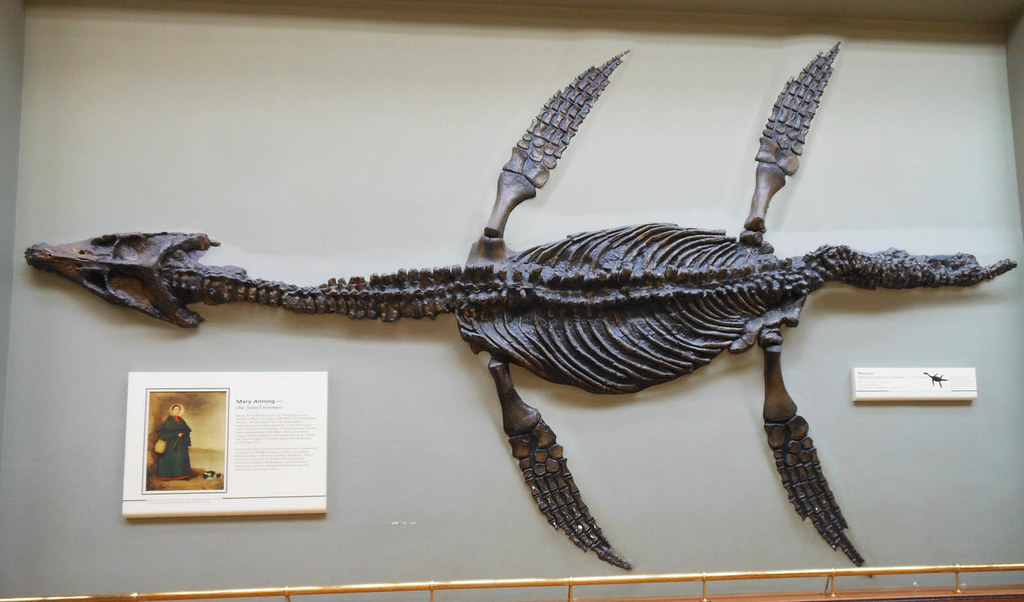Mary Anning was a famous fossil hunter and a pioneering palaeontologist. She discovered fossilised sea creatures from the time of the dinosaurs.
When she was just 12 years old, Mary Anning found and identified a 200 million year old ichthyosaur skeleton, with her brother Joseph. She went on to discover three separate species.
Anning’s work showed that creatures had existed in the Jurassic seas that were now extinct, an idea that wasn’t accepted at the time. Her skills in discovering the fossilised creatures and her knowledge of their anatomy made her the greatest fossil hunter of all time.
Most Influential Women in British Science
In 2010, Mary Anning was listed as one of the ten ‘Most influential women in British science‘ by the Royal Society.
During her lifetime, Anning became well known by Geologists in Britain, Europe and America and was widely consulted for her knowledge and expertise. Despite this, she was not eligible to join the Geological Society of London, as she was a woman.
Because of her gender and her background, Anning did not always receive credit for her work and her scientific contribution. Many of her discoveries, like her ichthyosaur discovery, were described in scientific papers, but were not credited to her.
Towards the end of her life, Anning received a regular small income raised by the scientific community, in recognition of her achievements.
Anning once wrote of her experiences:
“The world has used me so unkindly, I fear it has made me suspicious of everyone.”
Mary Anning Deserves A Statue
Please support the Mary Anning Rocks Campaign, spearheaded by Evie Swire, a girl from Dorset who would like to see a statue in Lyme Regis to commemorate Mary Anning and her great contribution to science.
As Marian Wright Edelman once said “You can’t be what you can’t see”. So please do pledge your support to this brilliant campaign in order to raise enough funds for the statue to be commissioned.
Her Discoveries
Mary Anning became the most notable fossil collector of her time and made a number of very important discoveries. When she was just 12 years old, Mary discovered the first recognised ichthyosaur, with her older brother Joseph.
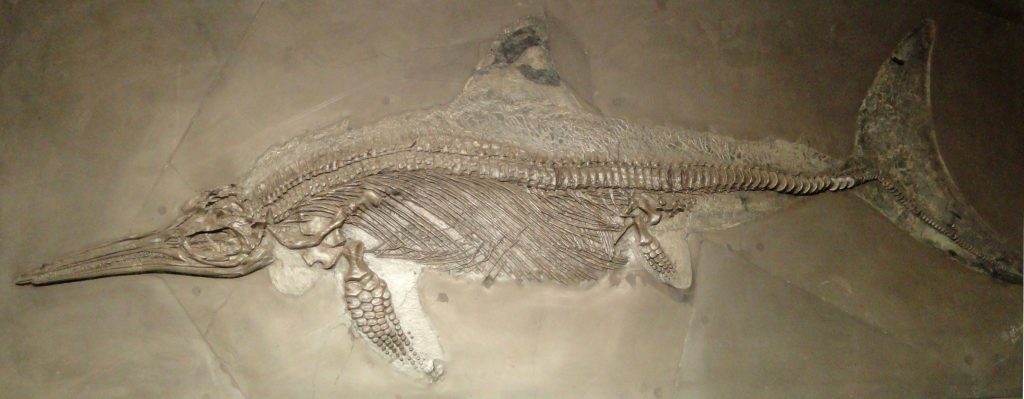
Joseph found the ichthyosaur skull. Mary, then went on to find the rest of the 5.2 metre-long ichthyosaur skeleton, over the next few months. It was the most complete skeleton found at the time and within a few years the ichthyosaur was put on display at the British Museum in London.
At the time of the Anning ichthyosaur discovery, George Cuvier had only just proposed the theory of extinction. Charles Darwin had not yet proposed the theory of evolution, as we know it. So the 5.2 metre ichthyosaur was a mysterious monster, that people thought had migrated to far-off lands.
The mysterious skeleton was studied for years and came to be called Ichthyosaurus which means ‘fish-lizard’. The ichthyosaurus is neither a fish nor a lizard, but is a marine reptile, that lived 200 million years ago, ruling the seas at the time of the dinosaurs.
Other Important Discoveries
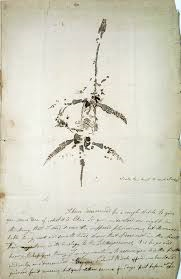
- Mary Anning found and drew the first ever complete plesiosaur, from Greek, meaning ‘near lizard’.
- She discovered the first pterosaur, to be found outside of Germany. Pterosaur, from Greek, meaning ‘winged lizard’.
- She played a key role in the discovery of fossilised faeces.
- Her discoveries informed the earliest representations of prehistoric species.
- The ichthyosaur skeleton discovered by Mary and her brother Joseph, provided the data for the first ever scientific paper about the ichthyosaur.
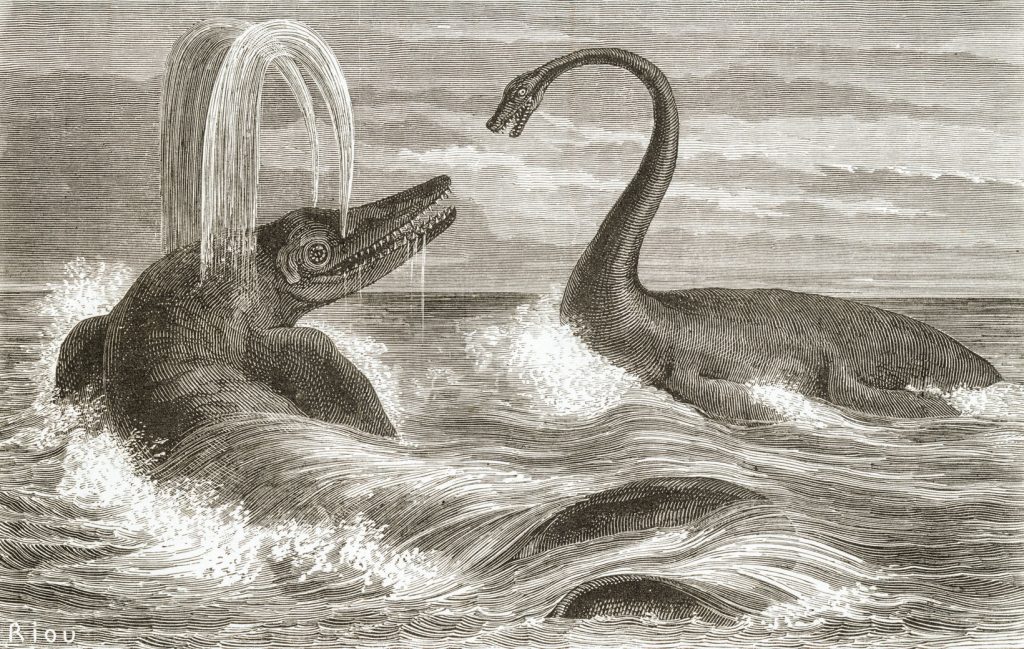
Where to Go
If you’re interested in Mary Anning and her discoveries, you can visit these amazing places where her discoveries are on display.
The Natural History Museum, London
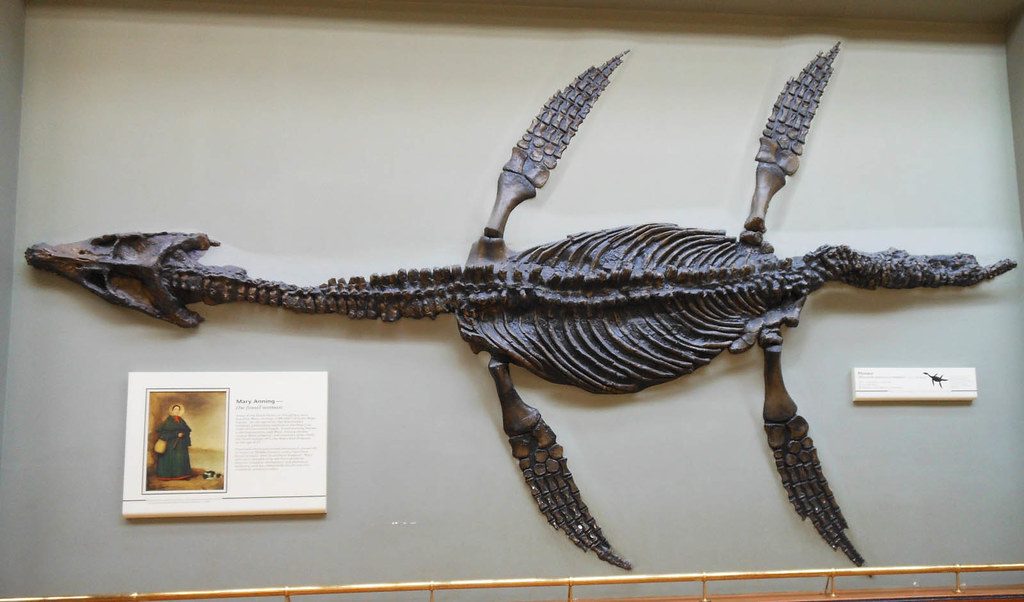
At the Natural History Museum in London, you can see Mary Anning’s ichthyosaur, plesiosaur and pterosaur fossils and find out more about her contribution to science.
Lyme Regis Museum, Dorset

The Lyme Regis Museum has a special connection to Mary Anning as it is built on the site of her former home. The museum also boasts beautiful sea views from the Mary Anning Wing, which is dedicated to the great fossil hunter and showcases a collection of spectacular fossils.
The Museum of Natural History, Oxford

The Museum of Natural History in Oxford, boasts one of Mary Anning’s Ichthyosaurs fossils in its collection. The museum has a partial skeleton of a young Ichthyosaur discovered in Lyme Regis by Mary Anning. The fossil is so well preserved that fish bones and scales from its last meal can be seen inside its ribcage.
